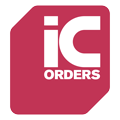Electronic parts form the backbone of the technology that permeates our everyday lives. From the smallest resistor in a child’s toy to the complex circuitry in a supercomputer, these components are integral to the functioning of our modern world. This comprehensive guide will delve into the world of electronic parts, their types, uses, and how they work together to create the devices we rely on daily.
The Basics of Electronic Parts
Electronic parts, also known as electronic components, are the individual elements that make up electronic systems. They are the building blocks of all electronic devices, from simple gadgets to complex machines. Each part has a specific function and is designed to work in harmony with others to achieve a desired outcome.
Electronic parts can be classified into two main categories: active and passive. Active components are those that can control the flow of electricity, such as transistors and diodes. Passive components, on the other hand, cannot control the current but can store or dissipate energy, like resistors and capacitors.
Active Components
Active components are the workhorses of electronic circuits. They control the flow of electricity and amplify signals. Transistors, diodes, and integrated circuits are examples of active components. These parts are essential in any electronic device, as they allow for the manipulation of electrical signals.
Transistors, for instance, are used to amplify or switch electronic signals and power. Diodes, on the other hand, allow current to flow in one direction, acting as a one-way street for electricity. Integrated circuits, often referred to as chips, are complex assemblies of millions of transistors and other components on a single piece of semiconductor material.
Passive Components
Passive components are just as vital in an electronic circuit. They do not have the ability to control current by means of another electrical signal, as active components do. Instead, they rely on the power source within the circuit to function. Examples of passive components include resistors, capacitors, and inductors.
Resistors are used to reduce current flow and adjust signal levels. Capacitors store electrical energy for later use, while inductors store energy in a magnetic field. These components are often used in conjunction with active components to create a functioning electronic device.
Understanding Electronic Circuits
An electronic circuit is a complete course of conductive material that allows electricity to flow. It includes a power source, such as a battery or mains power, and a load, such as a light bulb or motor, which consumes the power. In between, there are electronic parts that control how the power is used.
Circuits can be either series or parallel. In a series circuit, there is only one path for the electricity to follow. In a parallel circuit, there are multiple paths, allowing different parts of the circuit to operate independently of each other.
Series Circuits
In a series circuit, all components are connected end-to-end, providing a single pathway for current. This means that the current is the same through all components, but the voltage across each component can vary. If one component fails in a series circuit, the entire circuit becomes open and stops functioning.
Series circuits are often used in devices where it is important for all components to receive the same amount of current. Examples include string lights, where each bulb receives the same current, and certain types of battery chargers, where the batteries are charged equally.
Parallel Circuits
In a parallel circuit, components are connected across each other, providing multiple pathways for current. This means that the voltage across each component is the same, but the current through each component can vary. If one component fails in a parallel circuit, the rest of the circuit can still function.
Parallel circuits are common in most household electrical systems. For example, each appliance in a home is connected in parallel to the mains power, allowing each device to operate independently of the others.
Choosing the Right Electronic Parts
When building or repairing electronic devices, it’s crucial to choose the right parts. The choice of components can greatly affect the performance and reliability of the device. Factors to consider include the specifications of the parts, their quality, and their compatibility with other components.
It’s also important to consider the source of the parts. Reputable suppliers will provide high-quality components that meet industry standards. They can also provide technical support and advice, which can be invaluable when working on complex projects.
Understanding electronic parts and how they work together is essential for anyone interested in electronics, whether as a hobby or a profession. By mastering the basics, you can start to explore the fascinating world of electronics and create your own devices.
Now that you’re equipped with the knowledge of electronic parts and their crucial role in technology, take the next step with IC Orders. With over 12 years of experience in the electronic component market, we stand ready as your independent distributor to navigate both opportunities and challenges. Let us assist you in sourcing the exact part numbers you need and ensure your Bill of Materials (BOM) is complete. Contact Us for A Quote Today and experience the ease of working with a trusted partner in the electronics industry.
